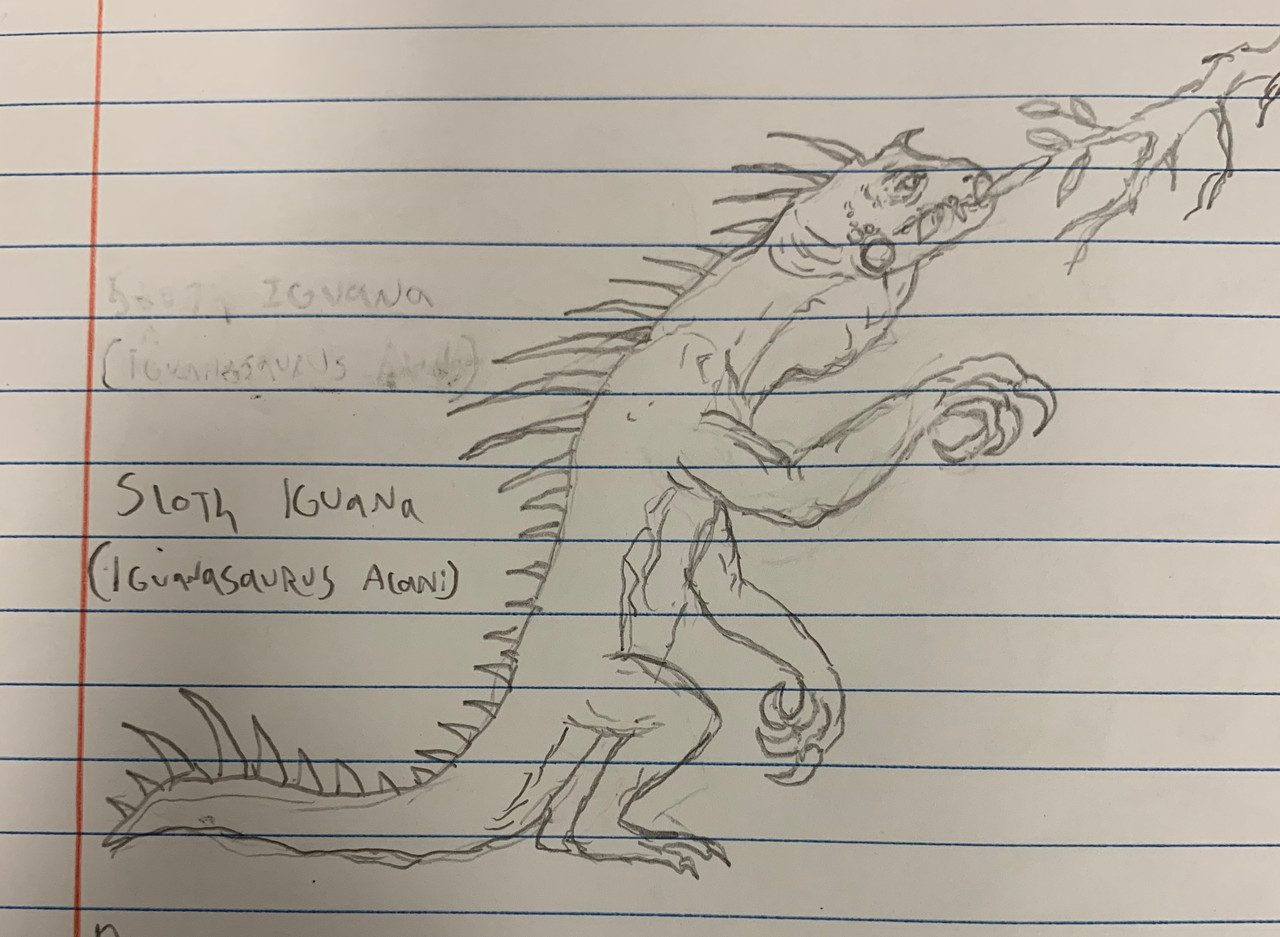HOME | DD
 Throngmar — Sloth Iguana
Throngmar — Sloth Iguana

#exocene #slothiguana #iguanasaurus #morderon #caribbean #iguana #megafauna #megatherium #pencildrawing #groundsloth #speculativeevolution
Published: 2021-02-02 01:59:48 +0000 UTC; Views: 1660; Favourites: 19; Downloads: 0
Redirect to original
Description
Sloth Iguana
Scientific name: Iguanasaurus alani
Other names: Giant Iguana
Ancestor: Green Iguana
Diet: Leaves
Habitat and range: Morderon island
Convergent evolution is fun. Fish and dolphins, tortoises and glyptodonts, theropods and terror birds (which are technically still theropods, but whatever), and so much more. If a body-plan works, it will show up again. Hell, independent crustacean lineages continue to evolve into crabs in a process called Carcinization, and some experts believe that all lifeforms will be crabs by 2035 (probably, I haven't checked). The Sloth Iguana, while not crab-shaped, is shaped like the ground-sloths that flourished in the Americas not too long ago. The image shown above is not how one would find most individuals. Simply put, bipedalism is off the table for the Sloth Iguana, as not only the largest lizard of the Exocene, it is one of the largest reptiles, full stop. Weighing up to 5 tons, sprawling 27 feet in length, and standing at 18 feet when on their hind legs, they were absolutely titanic. Because of their massive size and weight, they walk on four legs, with their giant forelimbs splayed out and propping their body at an upward angle. Most of the time, they feed on low-lying leaves, but can use their muscular hind legs and gigantic heavy tail as a counterbalance to prop themselves up, using their long forelimbs and curved claws to get at the highest of leaves. Because of the poor nutrition provided by leaves and the immense amounts of energy required to do anything, they spend the entire day browsing and resting. While they are exceptionally slow, that is rarely a problem, because few animals are confident enough to try and kill this thing. Not only is it gigantic, but it is also covered in big ol' spikes, and those hurt. Not even the mighty Caribbean Dragon goes after these gargantuan iguanas, because it is poorly-equipped for a frickin' dinosaur-looking fool. What's it gonna do, tongue-punch its leg, and hope that does something? They have but one predator.
























